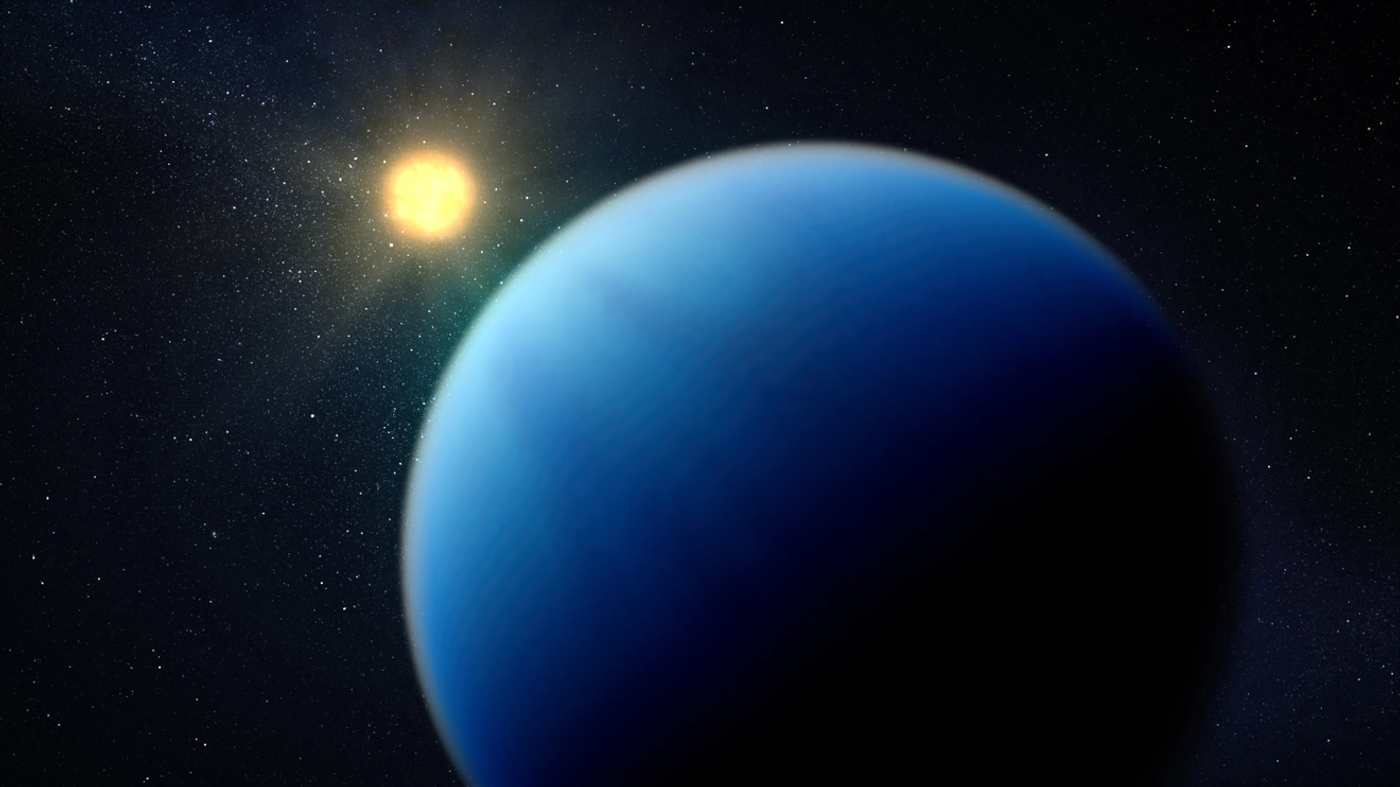NASA's Kepler Telescope Unveils Mystery Behind Exoplanet Size Gap
A recent study published in The Astronomical Journal uses data from the NASA K2 mission to examine the reasons behind why some exoplanets, specifically sub-Neptune exoplanets, are losing their atmospheres to space through photoevaporation, which is when the star’s radiation strips away a planet’s atmosphere, or core-powered mass loss, which is when the planet’s interior radiation strips away the planet’s atmosphere. This study was led by the California Institute of Technology (Caltech) and holds the potential to help astronomers better understand the formation and evolutionary processes of exoplanets, and specifically why there is a notable “size gap” of exoplanets between super-Earths and sub-Neptunes.
Artist illustration displaying the sub-Neptune exoplanet, TOI-421 b. This recent study found new evidence suggesting how sub-Neptunes can lose their atmosphere. (Credit: NASA, ESA, CSA, and D. Player (STScI))
“Scientists have now confirmed the detection of over 5,000 exoplanets, but there are fewer planets than expected with a diameter between 1.5 and 2 times that of Earth,” said Dr. Jessie Christiansen, who is a research scientist at Caltech/IPAC, along with being the science lead for the NASA Exoplanet Archive and lead author of the study. “Exoplanet scientists have enough data now to say that this gap is not a fluke. There’s something going on that impedes planets from reaching and/or staying at this size.”
For the study, the team analyzed photoevaporation data obtained from NASA’s K2 mission for two star clusters called Praesepe and Hyades, which are both estimated to be between 600 and 800 million years old. The longstanding hypothesis among astronomers is that planets and stars are broadly the same age. Therefore, the team hypothesized that any sub-Neptunes within these star clusters would be old enough to undergo photoevaporation but still young enough to not undergo core-powered mass loss.
In the end, the team observed close to 100 percent of stars observed in Praesepe and Hyades possessed at least one sub-Neptune exoplanet or a sub-Neptune candidate and were confident they still have their atmospheres. This contrasts stars older than 800 million years observed by K2, as these stars are typically comprised of only 25 percent sub-Neptunes. Since these stars are older, this indicates that core-powered mass loss is responsible for these planets stripping their atmospheres away. Therefore, the team concluded that Praesepe and Hyades have not experienced photoevaporation and that core-powered mass loss being the likely cause of atmospheric stripping of these planets.
While the study consists of five years of data, the team aspires to conduct follow-up observations to confirm these findings and hopefully conclude the reasons behind the gap in planetary sizes discussed earlier.
What new discoveries will astronomers make about exoplanets and gaps in their sizes in the coming years and decades? Only time will tell, and this is why we science!
As always, keep doing science & keep looking up!
Sources: The Astrophysical Journal, NASA, Wikipedia, NASA (1), Wikipedia (1), NASA JPL, Britannica, Wikipedia (2)









